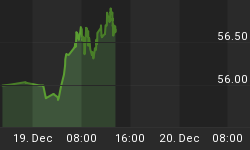In 1980, the US government - along with pretty much all of its peers - began borrowing at an accelerating rate. Note on the following chart how the trend line steepened in the 2000s and then steepened again in this decade, with a sudden and unexpected pop in 2015 and early 2016, even as the current recovery entered its 8th year.

Also in the past year, stock prices have risen from "near-record, overvalued-by-every-historical-measure" levels, to "new-record, grossly-overvalued" levels - and show no signs of slowing down. Note the massive jump in S&P 500 trading volume that began in January and has persisted throughout the year.

Investors, meanwhile, are borrowing to snag more of those apparently-easy profits, with margin debt — money borrowed against stock portfolios to buy more shares — now above both 1999 and 2007 levels.

And now consumers are joining the party:
U.S. Households Ramp Up Borrowing Led by Mortgages, Credit Cards
(Bloomberg) - U.S. households increased their borrowing in the final three months of 2016 at the fastest pace in three years, according to the Federal Reserve Bank of New York.
Consumer debt rose by $226 billion, or 1.8 percent, in the fourth quarter, led by a $130 billion increase in mortgage loan balances and a $32 billion increase in credit-card borrowings, the New York Fed said Thursday. The rise brought total consumer debt to $12.58 trillion, just shy of the $12.68 trillion peak in the third quarter of 2008.
New mortgages originated totaled $617 billion, marking the biggest three months for volumes since the third quarter of 2007.
"Debt held by Americans is approaching its previous peak, yet its composition today is vastly different as the growth in balances has been driven by non-housing debt," Wilbert van der Klaauw, a senior vice president at the New York Fed, said in a press release.
Student loan balances rose to a new record high of $1.31 trillion, and auto loan debt also increased to a record $1.16 trillion in the 18-year history of this data series.
This is clearly a credit-driven boom of some sort. But is it the long-awaited Austrian School of Economics "crack-up boom", the exclamation point at the end of especially-frenzied and broad-based financial bubbles? That may be a question answerable only in retrospect. But when the crack-up boom finally hits, this acceleration across multiple sectors is how it will look and feel.
















